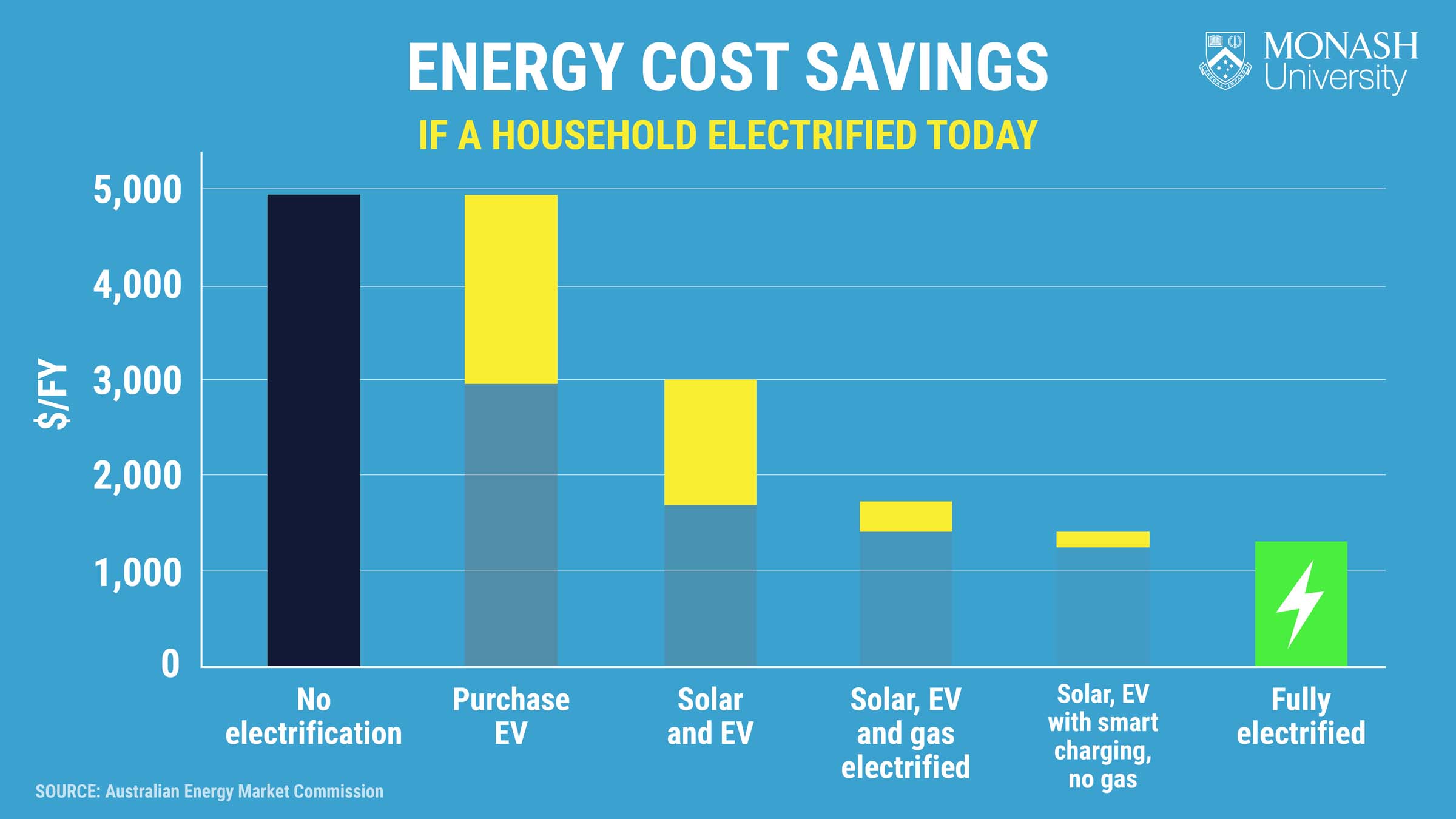The hip-pocket case for going electric
Households switching to electric appliances and vehicles are seeing big savings and smaller carbon footprints. But where do you start?

Aussies are paying more for energy, but research shows households can cut thousands from their bills by making the switch from gas to electric.
One in three Aussie homeowners plan to cancel their gas supply within the next 10 years and 'electrify' , swapping out traditional gas-powered appliances like stoves, heaters and hot water systems for highly-efficient electric ones.
The Australian Energy Market Commission projects that households making the switch could reduce their energy bills by close to $1000 a year, or by around 20 per cent of their current spend, within the next decade.
Gas supply charges alone cost upwards of $220 a year, and gas appliances are significantly less efficient than their electric rivals.
A split-system, for example, is three times more efficient at warming a home than a gas heater, saving households an average of $530 a year on heating bills alone.
Add in induction cooktops, heat-pump hot water systems and rooftop solar, and the savings quickly add up.
For households that replace all major appliances and vehicles with electric alternatives, the savings are even greater.
A fully electrified home could slash annual energy bills by as much as 70 per cent, dropping from around $5000 a year to under $1500.

Electricity prices are also forecast to fall by about 13 per cent over the next 10 years as more renewables come online, while gas prices are tipped to rise.
And as customers leave the network, remaining consumers will pay higher fixed costs for things like pipeline maintenance.
The climate connection
The savings are clear, but there's another side to going electric: what it means for Australia's climate.
Between 2011 and 2021, Australian homes burned through an average of around 200 PJ of gas a year, producing about 2.3 per cent of the nation's greenhouse gas emissions.
That's equivalent to putting more than half a million extra cars on the road every year.
And these emissions are making our climate warmer and more unpredictable.
For example, here in Logan the average winter day is now around 1.1C warmer than 30 years ago.

Unlike gas, electricity can be generated by clean, green renewable sources like solar, wind and hydro which produce little or no emissions.
Renewables supplied almost 40 per cent of on-grid electricity in 2023-24, with solar providing nearly one-fifth.
And more than four million Aussie homes now have rooftop solar, making the shift visible in neighbourhoods across the country.
Meanwhile, gas use in homes is declining even in states that have traditionally relied on it for heating and cooking.
Looking ahead
The upfront cost of electrifying our homes isn't cheap, and the key challenge is making sure all households can take advantage of it – including renters and apartment dwellers who may struggle to install solar or EV chargers.
Resources like the Getting off Gas Toolkit is a great place to start exploring your options, while the Federal government's Rebates and assistance page shows all the grants, loans and rebates available in your local area.
In Queensland for example, the Cheaper Home Batteries Program provides a discount on the cost of installing a small-scale battery system.
For now though, the bottom line is simple.
With gas and petrol costs rising, and electricity getting cleaner and cheaper, electrification isn't just about reducing emissions – it's a chance to future-proof the household budget.
Want more information on how your climate is changing? Check out the last article in this series.
Amelia Pearson is the Operations Manager at the Monash Climate Change Communication Research Hub.
This column is part of a collaboration between Monash University and News Corp to deliver hyperlocal weather and climate information.

